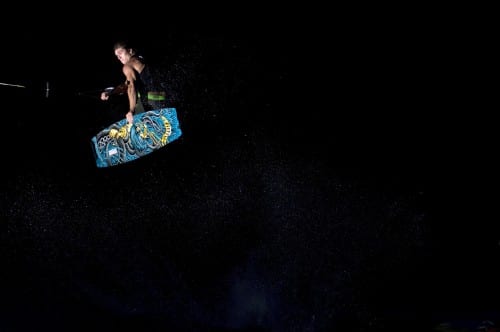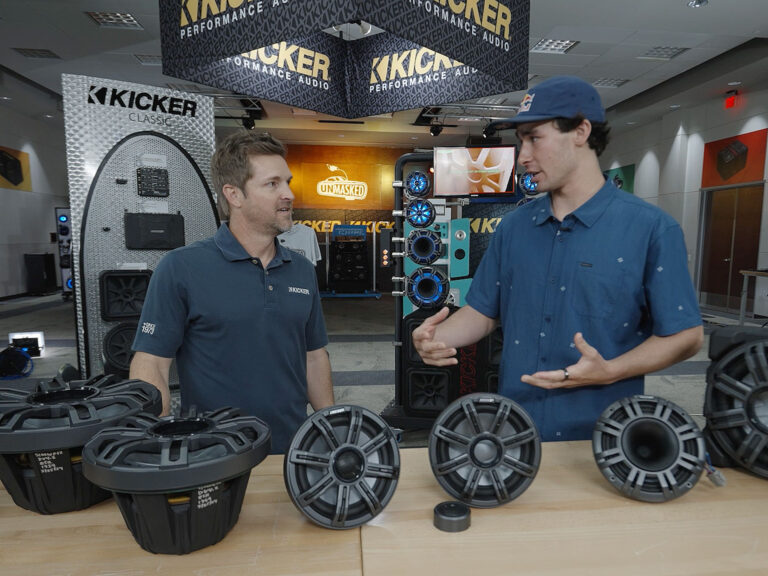
In 2009, Aaron Rathy had one of the best seasons in wakeboarding history. He was a riding tour de force, winning nine events overall including Worlds and the King of Wake season title. At TransWorld WAKEBOARDING‘s Wake Awards, he added to his haul, winning Best Wakeboarder as well as Move of the Year for his wrapped melon backside 1080. Rathy was rolling. But somewhere between the end of the 2009 season and the beginning of 2010, Rathy’s left knee succumbed to the frenetic pace. He missed all but one event in 2010, underwent two surgeries and endured seven months of intense rehab. Now, Rathy is riding again. And while it will take time to return to the heights of his 2009 form, Rathy says he’s riding with a determination he hasn’t felt since he was striving to turn pro.
You had an absolutely monster year in 2009. You won the King of Wake and then won both Wakeboard of the Year and Move of the Year at the Wake Awards. What was that time like for you? It was almost like a dream come true. It was cool for everything to come together and have a season like that. And ride on the Pro Tour with my best friends and guys I’ve looked up for a long time like Danny Harf and Rusty. It was cool riding alongside them and being on their level for once. I always knew I could do it, but I could never put it together in a contest. It was cool to be one of the top dogs and bring that to a contest and let every one know.
You killed it outside the contest scene too. Is that something you always strive for — success in and out of contests? Yeah, every since I started, I’ve wanted to be good at every aspect. I started off focusing on the wake, but as soon as I hit rails, that’s all I wanted to do. And then double-ups were the same way. As soon as I started hitting double-ups, I was like “I don’t want to hit the wake anymore.” I think that has helped me become a better overall rider. Now I’m moving a little bit more into cable. I really just want to be as good at wakeboarding as I possibly can.
You were headed into 2010 with a ton of momentum, but then you hurt your knee. How did it happen? I pushed the winter season really hard. I went to the Philippines and rode really hard and just kept it up. It wasn’t like one specific trick, really, it was more the combination of years of riding really hard. In 2007, while filming for Push Process, I tore my knee on a heelside 10. I tore 50 percent of my meniscus off. The board actually broke under my foot and my knee kind of went with it. That happened and then just going big. I mean years of going as big as I could on a wakeboard just crushed the cartilage in my knee. So they had to go in there and make some repairs and they actually put some artificial cartilage in there too.
You didn’t initially have surgery, though, right? Nah, I took a month off and then went to Wake Games and tried to ride. I actually had a pretty good run. I made it to the semis and got beat out by Harley for that top spot to go into the finals. But I was riding in pain, so after that contest I decided to get it cleaned out and hopefully come back middle of the season. I had a scope and during that, they realized that I chipped cartilage off the bone of my knee. So it was going to be a little bit of a longer recovery than I thought and that pretty much put a wrap on 2010 for me. Since then, I’ve had another surgery and I’ve been rehabbing like crazy all winter.
How long were you off the water? It’s been about seven months of not riding and being in the gym with a trainer. If you know me, then you know it’s been torture. I’m always on the lake, always skateboarding or doing something active. For me to be on crutches for three months, it was really hard to handle. To say the least, I’m stoked to be back riding and building rails and just having fun on my board again.
Were you able to take that energy you have for riding and put it into rehab? For sure. I treated it more like a job when I was hurt than I ever have. I just wanted to do as mush as I possibly could to get back on the water as soon as possible. I knew from the research that I’d done that it was going to take the gym time. I hate being in the gym, but I was going to do whatever it took for me to get back on my board.
Has your approach to training changed at all? I think I’m a little more relaxed in way. I don’t feel like I need to ride 10 times in a day, but I’m a little more focused, too. When I’m riding, I feel more determined again. I almost have that determination that I had when I was trying to go pro. I really wanted it, and I was super-eager to start riding with all the big guys. It’s pretty cool. It’s almost refreshing for me. It feels different than I’ve felt in a few years anyway.
When did you finally get back on the water? The middle of January. I’ve just been babying it. For the first week, I pretty much just cruised around. And I just started doing tricks in March. All the tricks I’ve done so far have been pretty basic, like heelside 7s and all the 540s. I’m just trying to get it back, but it feels really good. It feels like I’m almost there.
Is your focus right now on getting back to where you were or are shooting even past that? I just want to get to where I’m feeling 100 percent on my board. For me, it’s always been if you feel good, you’re riding good, so I’m not trying to pressure myself into “I’m going to go out and do a backside 10 next week.” I definitely see that in the future though — pushing my riding further than it’s ever been.
What’s your timeline looking like? Will you be back for Wake Games? To be honest, I’m not trying to push myself too hard with Wake Games, because I’m trying to take it slow. But I’d like to have pretty much everything back before the Pro Tour. I would like to be ready for Wake Games, but I’m not going to force it. My goal now is to be ready for the first Pro Tour stop.







